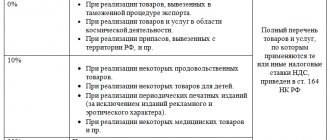Why do you need to certify copies?
GOST R 7.0.8-2013 “System of standards for information, library and publishing.
Record keeping and archiving. Terms and definitions" (approved by order of Rosstandart dated October 17, 2013 No. 1185-st) divides all copies taken from documents into regular and certified. In this case, a copy is recognized as a copy of a document that completely reproduces the information of the original. And a certified copy is a copy that contains details that ensure its legal significance. Receive requirements from the Federal Tax Service and send requested documents via the Internet
As you can see, certification of a copy is necessary to give it legal significance. In other words, only such copies are used in official document circulation, including for submission to state and municipal authorities or for transfer to other organizations, individual entrepreneurs and individuals.
In particular, it is certified copies of documents that can confirm expenses for tax purposes (letter of the Ministry of Finance dated October 25, 2019 No. 03-03-06/1/82236). You will also have to certify copies of paper documents submitted to the tax office in response to the corresponding requirement (Clause 2 of Article of the Tax Code of the Russian Federation).
Attention
You can facilitate and speed up the process of sending documents to the inspection using special services, for example, the “Connector Kontur.Extern” web service. It makes it possible to prepare and send tens of thousands of electronic documents to tax authorities at a time, while approximately 9 thousand documents are processed per hour. Through the “Connector” you can transfer to the Federal Tax Service any electronic documents created in approved formats (for example, invoices, TORG-12 invoices, etc.), as well as scanned images of any documents created on paper: acts, contracts, payments and etc.
Connect to Kontur.Extern for free with your electronic signature
Why are copies of documents needed?
Organizations, as legal entities, submit copies of documents to the founder, the tax office, executive authorities, the social insurance fund and others.
Every citizen, whether at work or in life, sometimes needs to provide copies of documents: for example
- Certificates confirming receipt of wages; to organizations involved in social security: subsidies, social payments;
- A work record book for receiving benefits, for part-time work, to a bank to obtain a loan, to the Pension Fund of the Russian Federation for calculating a pension, at the place of request.
Guidelines for certification
Certification of copies of documents is regulated by another state standard, namely: GOST R 7.0.97-2016 “System of standards for information, library and publishing. Organizational and administrative documentation. Requirements for the preparation of documents" (approved by order of Rosstandart dated 08.12.16 No. 2004-st; hereinafter - GOST R 7.0.97-2016).
Also, recommendations for preparing copies of documents are given in Appendix No. 18 to the order of the Federal Tax Service dated November 7, 2018 No. ММВ-7-2/ [email protected] , in letters of the Ministry of Finance dated August 7, 2014 No. 03-02-RZ/39142 and dated October 29, 2015 No. 03-02-RZ/62336.
Advice
Before certifying a document, it would be a good idea to familiarize yourself with the Methodological Recommendations for certifying the accuracy of copies of documents and extracts from them (approved by the decision of the FNP board of April 25, 2016, protocol No. 04/16). Although this document is designed for notaries, it contains a lot of useful information that will be useful when certifying copies yourself.
Why are copies needed and how to get them
Any citizen may need certain copies of documents: from the place of work, legal papers, receipts, etc. Thus, banks may request a copy of the employment record from him when issuing a loan or new employers when registering employees on an external part-time basis.
What to do if your employee is asked for a copy of a personnel document? The algorithm of actions is simple, but certain rules established by law still exist. Let's look at the new rules for registration and certification of copies using the example of issuing a photocopy of a work book.
Rule 1. Applying to the employer with a written statement
This will be the starting mechanism for obtaining a copy. The issuance of copies upon oral request is not provided for by law. The reason for this is Art. 62 of the Labor Code of the Russian Federation, which includes the phrase “upon a written application from the employee...”.
What should be written in it and what does it look like? There are no special rules here. The text can be typed on a computer or designed in the old proven way - by hand on a piece of paper. The style of presentation of the request should be businesslike, and the text structure should correspond to the official document. This means that the header of the application indicates in whose name the application is being submitted, then the request itself is stated. The application is completed with the personal signature of the employee with a transcript and date:
| General Director of Meteor LLC Savelyev Petr Nikolaevich from a mechanic shop plumber Vasiliev Anatoly Konstantinovich Statement Based on Art. 62 of the Labor Code of the Russian Federation, I ask you to provide me with duly certified copies of: 1. Work book; 2. Order for employment. Vasiliev / Vasiliev Anatoly Konstantinovich / 06.29.2018 |
Rule 2. Three-day grace period
The employee does not have the right to immediately demand ready copies after writing the application. According to Art. 62 of the Labor Code of the Russian Federation, the employer has 3 days to fulfill his request. Thus, according to the law, he does not have an obligation to urgently (on the same day) provide the requested duplicates.
The question of what date these 3 days are counted from is not regulated by law. Rostrud specialists believe that the first of these days is the date the employee submitted the application. And the period itself is calculated in working days. However, judges confirm the legality of calculating the period from the next day after receiving the employee’s application (Decision of the Rostov Regional Court dated January 29, 2018 in case No. 11-104/2018).
In order to avoid disputes with regulatory organizations, we advise you not to delay issuing copies until the last day.
Rule 3. We certify copies in accordance with the new standard
From July 1, 2022, legislators have adjusted the rules for certifying copies of documents. What has changed?
The copy made by the responsible person of the employer must include:
- The inscription "True".
- Position, signature of the responsible person and its transcript.
- Certification date.
- Indication of the storage location of the original document from which the copy was made.
The last point is the innovation of the new GOST R 7.0.97-2016. Otherwise, the assurance wording is no different from the previous one (applicable before 07/01/2018). The same rules apply to the preparation of any “outsourced” copies presented to external users: be it a copy of a work book, an employment order, or another document requested from the organization.
A copy for internal use can be certified in a simplified manner: it is enough to write “True”, indicate the position of the person certifying it, put a signature with a transcript and the date of certification.
GOST R 6.30-2003 is being replaced by GOST R 7.0.97-2016. The company decides independently whether to use it for registration of organizational and administrative documents.
Let's continue the example discussed earlier.
Statement from the plumber of the machine shop A.K. Vasiliev went to the HR department employee E.B. Garafeeva for execution. She was aware of the latest innovations associated with the advent of GOST R 7.0.97-2016. Therefore, according to the new rules, I issued a certification inscription on the requested copies:
| The original document is located in Meteor LLC in file No. K-39/298 for 2022. Right HR Department Inspector Garafeeva /Garafeeva E.B./ 07/02/2018 Print |
Who has the right to certify documents
Any authorized person has the right to certify the accuracy of the copy on behalf of an organization or individual entrepreneur.
Such authority may arise from the statutory documents (in particular, the head of the organization, the chairman or secretary of the general meeting, the head of the audit commission, etc. have the right to certify copies). Or it can be based on other documents - a power of attorney, an organization order, a job description, etc.
An entrepreneur has the right to independently certify a copy of a document or entrust it to another person (clause 5 of the Requirements given in Appendix No. 18 to the Federal Tax Service order dated November 7, 2018 No. MMV-7-2/ [email protected] ; hereinafter referred to as the Requirements). Please note that such a person can only be an individual entrepreneur. The position of this employee should be indicated on the certification mark affixed to the copy.
Check the counterparty for signs of a shell company and the presence of disqualified persons
How to certify copies of statutory documents
The legislation does not contain any specifics regarding certification of copies of statutory documents. Therefore, the rules discussed above should be applied. Since we are talking about multi-page documents (charter, constituent agreement), it is also necessary to take into account the procedure for binding such papers for the purpose of their certification.
Thus, the firmware must be done for 4 punctures, although for documents of small volume 3 punctures are acceptable (clause 4.21 of the Rules for organizing the storage, acquisition, recording and use of documents, approved by order of the Ministry of Culture dated March 31, 2015 No. 526). At the same time, it must be possible to freely read the text of the document, all its details, dates, visas, resolutions, other inscriptions, seals, stamps and marks. Also, the firmware must be done in such a way that each individual page can be copied using a copy machine. But at the same time, the firmware should not “fall apart” into separate sheets (clause 3 of the Requirements).
The stitching must be done with a strong thread or tape, its ends should be brought to the back of the last sheet and tied. After this, the ends of the thread (tape) are sealed with a paper sticker, on which the certification inscription is affixed in the manner indicated above - that is, part of it is on the sticker, and part of it is on the sheet itself.
Determine the likelihood of an on-site tax audit and receive recommendations on the tax burden
Is it possible to certify a document by handwriting?
There is no legislation prohibiting the use of handwritten inscriptions on copies. This is the most common authentication method. Stamps and impressions are used for large volumes of documentation for convenience.
Sample
The hand lettering looks like this:
Sample:
| Copy is right, The original is located in ______________ (short name of the organization) _________ ______________ ______________ (position) (signature transcript) (last name and initials of the person who certified the document) M.P. (date of) |
How to properly certify documents using the “Copy is True” stamp
GOST R 7.0.97-2016 does not provide for the affixing of the “Copy is correct” stamp. At the same time, you can use a combination of two stamps - “Copy” and “Correct”. The first of them will mean that the corresponding document reproduces the original, but is not itself such. The second stamp is needed to mark the certification of the copy.
Advice
We do not recommend using the “True Copy” stamp to certify documents.
Especially if copies will be used outside the organization. In conclusion, we note that certification of a copy of a document is a simple procedure that any taxpayer can perform independently. But at the same time, you must adhere to the rules, violation of which may lead to the fact that the copy will not be considered certified. This, in turn, will entail additional costs of time and money. And in some cases it can lead to a fine for violating the deadlines for submitting documents to the Federal Tax Service.
THE OLD GOST LEAVES, ANOTHER COMES...
■ GOST R 6.30-2003 was adopted and put into effect by the State Standard of Russia in 2003. The provisions of the standard apply to organizational and administrative documents related to the Unified System of Organizational and Administrative Documentation (USORD) - regulations, instructions, orders, decisions, protocols, acts, letters, etc.
The standard establishes the composition of document details, requirements for the execution of details and document forms, including forms with the reproduction of the State Emblem of the Russian Federation. The standard has been in force and applied for more than 13 years. During this time, the practice of documentation has advanced, and there was a need to change the standard.
GOST R 6.30-2003 is actually the fourth edition of the standard, first developed in 1972, or more precisely two standards of 1972:
• GOST 6.38-72 “Unified documentation systems. System of organizational and administrative documentation. Requirements for document preparation";
• GOST 6.39-72 “Unified documentation systems. System of organizational and administrative documentation. Sample form."
The first standard established the requirements for the preparation of documents, the second - the order of location and boundaries of details in the sample form and the requirements for document forms. These standards were applied in government bodies and organizations throughout the country. In 1990, they were revised, their content was combined into one standard - GOST 6.38-90 “Unified documentation systems. Unified system of organizational and administrative documentation. Documentation requirements."
The next stage was the updating of the standard in 1997 and the appearance of GOST 6.30-97 “Unified documentation systems. Unified system of organizational and administrative documentation. Documentation requirements."
Changes were made to the 1997 standard by Decree of the State Standard of Russia dated January 21, 2000 No. 9-st (change No. 1 to the standard), including the design of some details (details “Addressee”, “Date”, “Mark of the presence of an application” and etc.).
In 2003, the 1997 standard was revised, and as a result, GOST R 6.30-2003, which is currently in force, was introduced.
■ In what cases is GOST updated? The procedure for developing and approving national standards of the Russian Federation, the procedure for updating them, as well as the rules for canceling existing standards are established by GOST R 1.2-2004 “Standardization in the Russian Federation. National standards of the Russian Federation. Rules for development, approval, updating and cancellation" (hereinafter - GOST R 1.2-2004). Section 5 of this document lists cases in which a national standard must be updated:
• if the content of the standard is in conflict with federal laws, other regulatory legal acts of the Russian Federation, technical regulations, goals and principles of national standardization and, as a result, does not satisfy the modern economic, social or other needs of the country, including the level of development of science and technology ;
• if the content of the standard prevents compliance with a newly concluded international agreement;
• if the content of the standard contradicts the content of a newly developed or other updated national standard of the Russian Federation (including an interstate standard put into effect as a national standard) or if these standards duplicate each other.
As for GOST 6.30-2003, the reasons for its revision were the reasons mentioned in the first paragraph of this list. These are, first of all, discrepancies that arose in the composition of document details in connection with the adoption of the Rules for office work in federal executive authorities (approved by Decree of the Government of the Russian Federation dated June 15, 2009 No. 477). And also the fact that, compared to 2003, when GOST R 6.30-2003 was approved and put into effect, the scope of use of electronic documents in management has expanded significantly, which, of course, should be reflected in the standard.
■ Who changes GOST and how? Clause 5.1.2 of GOST R 1.2-2004 establishes that updating the current national standard can be carried out by revising it, developing an amendment to the standard, and in exceptional cases (if there are typos, errors or other inaccuracies) - by amending the standard.
The decision on which option to update the standard will be chosen (revision or amendment) is made by the national standardization body. At the same time, he is guided by the proposals of the standard developer and takes into account the nature of the changes that need to be made to the standard.
Developed GOST R 6.30-2003 by the All-Russian Scientific Research Institute of Documentation and Archiving, which in 2013 initiated updating the standard. Since the Technical Committee of Gosstandart, through which GOST R 6.30-2003 once passed, was liquidated, it was decided to revise the standard in Technical Committee 191 of Rosstandart, responsible for the system of standards for information, library and publishing (SIBID).
For this reason, the new GOST has a different number and is included in a different class of standards. Its name has also changed somewhat. GOST R 6.30-2003 was associated with USORD, and the name of this system appears in the title of the standard, but since 1993 it has not been maintained or updated, since currently there is no government body authorized to maintain and develop USORD.
Thus, changing the name of the standard means that the new GOST is not related to the USORD and applies to all organizational and administrative documentation.






